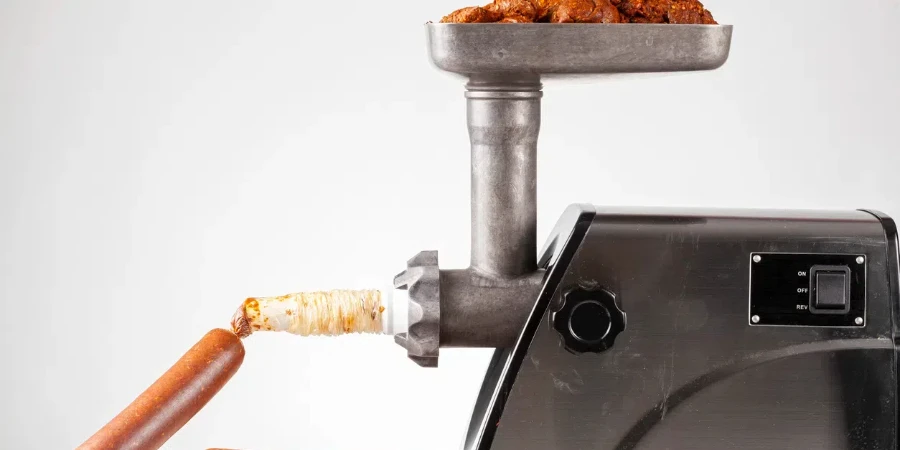The global sausage stuffer market is expanding rapidly, fueled by the growing demand for sausages worldwide, with a projected market value of over $110 billion by 2024. This article will provide an in-depth analysis of the key factors driving this growth, from market trends and technological innovations to crucial features for selecting the right sausage stuffer. For professional buyers, understanding these insights is vital for making informed decisions in a competitive and evolving market.
Table of Contents:
– Understanding the Sausage Stuffer Market
– Key Features to Consider When Selecting a Sausage Stuffer
– Evaluating Performance and Efficiency
– Cost Considerations and Budgeting
– Trends in Sausage Stuffer Technology
– Making an Informed Decision
Understanding the Sausage Stuffer Market
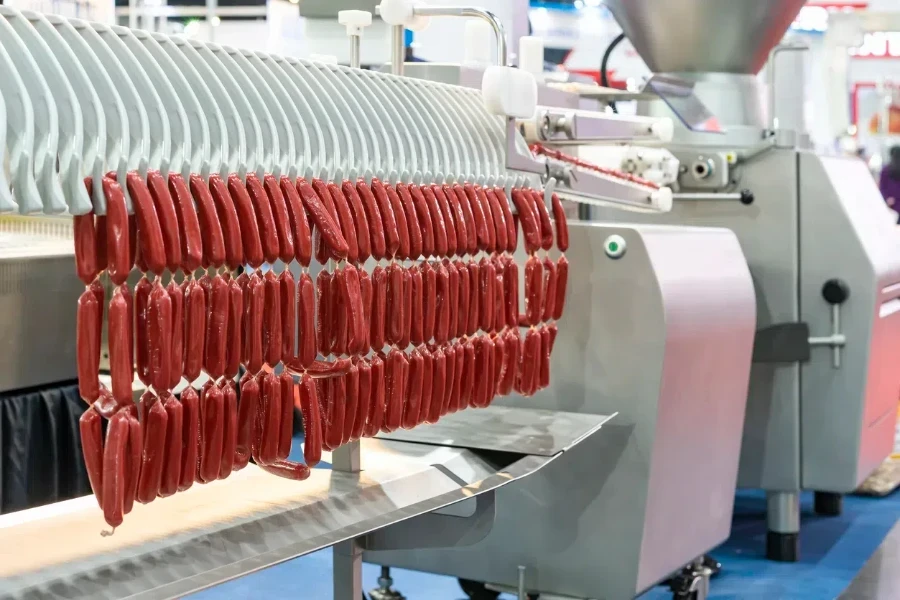
Growth and Demand Analysis
The sausage stuffer market is experiencing significant growth, driven by the increasing demand for sausages globally. In 2024, the revenue in the global sausages market is projected to reach US$110.70 billion, with an annual growth rate (CAGR 2024-2029) of 5.28%. This growth is indicative of the rising popularity of sausages, which in turn fuels the demand for sausage stuffing machinery. The United States alone is expected to generate US$2.79 billion in revenue from sausages in 2024, with a CAGR of 15.52% from 2024 to 2029, reaching US$5.74 billion by 2029.
The number of users in the sausages market is also on the rise. By 2029, the global number of users is expected to reach 216.4 million, with user penetration increasing from 2.4% in 2024 to 3.0% by 2029. In the United States, user penetration is projected to grow from 3.9% in 2024 to 4.6% by 2029, with the number of users reaching 15.8 million. This growing user base highlights the expanding market for sausage stuffers, as more consumers seek to produce sausages at home or in small-scale commercial settings.
The average revenue per user (ARPU) in the global sausages market is expected to be US$39.94 in 2024. In the United States, the ARPU is significantly higher at US$224.00. This disparity suggests a higher willingness to spend on sausage-related products, including sausage stuffers, in the U.S. market. The increasing ARPU and user base underscore the lucrative opportunities for manufacturers and suppliers of sausage stuffing machinery.
Key Players in the Industry
The sausage stuffer market is dominated by several key players who have established themselves as leaders in the industry. Companies such as Johnsonville Sausage, Tyson Foods, and Hillshire Brands are prominent in the sausages market, contributing significantly to the overall revenue. These companies not only produce sausages but also invest in the development and distribution of sausage stuffing equipment to meet the growing demand.
Johnsonville Sausage, a well-known brand in the United States, has a strong presence in the market with a wide range of sausage products. Their investment in sausage stuffing technology ensures that they can maintain high production standards and meet consumer demand. Similarly, Tyson Foods, another major player, leverages its extensive distribution network to supply both sausages and sausage stuffing equipment to various markets.
Hillshire Brands, known for its premium sausage products, also plays a crucial role in the sausage stuffer market. Their focus on quality and innovation has positioned them as a key player in the industry. These companies’ dominance in the market is supported by their ability to adapt to changing consumer preferences and invest in advanced sausage stuffing technologies.
Key Features to Consider When Selecting a Sausage Stuffer
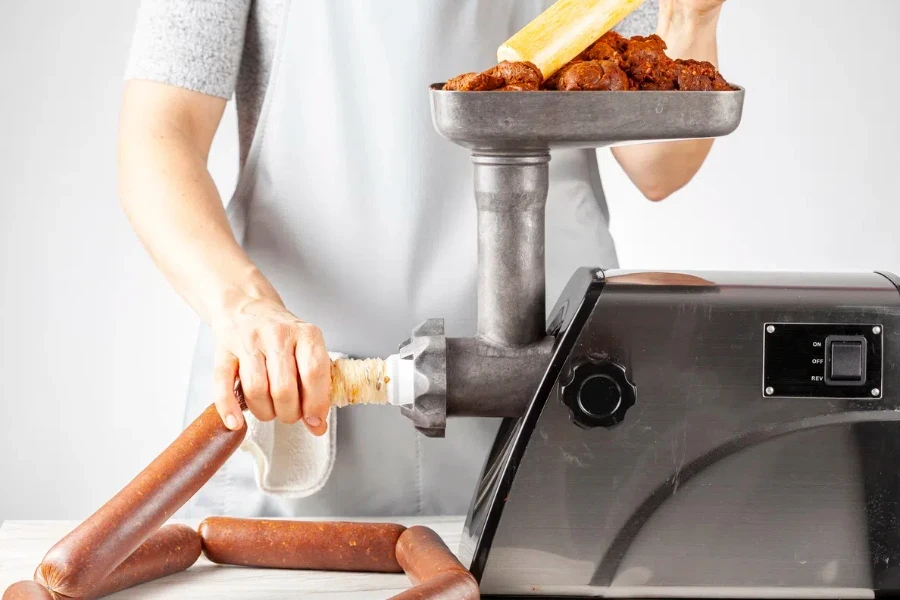
Material Quality and Durability
When selecting a sausage stuffer, material quality and durability are paramount. High-quality materials such as stainless steel are preferred due to their resistance to corrosion and ease of cleaning. Stainless steel sausage stuffers are known for their longevity and ability to withstand the rigors of frequent use, making them ideal for both home and commercial applications. The durability of the material ensures that the equipment can handle the pressure and force required to stuff sausages efficiently.
In addition to stainless steel, other durable materials such as food-grade plastic and aluminum are also used in sausage stuffers. These materials are lightweight and easy to handle, making them suitable for smaller-scale operations. However, they may not offer the same level of durability as stainless steel, especially in high-volume production environments. Therefore, it is essential to consider the specific needs and usage frequency when choosing the material for a sausage stuffer.
The construction quality of the sausage stuffer also plays a crucial role in its durability. Well-constructed machines with robust components are less likely to break down and require frequent maintenance. Investing in a high-quality sausage stuffer with durable materials and solid construction can lead to long-term cost savings and consistent performance.
Capacity and Size Options
The capacity and size of a sausage stuffer are critical factors to consider, as they determine the volume of sausages that can be produced in a single batch. Sausage stuffers come in various sizes, ranging from small, manual models suitable for home use to large, electric models designed for commercial production. The capacity of a sausage stuffer is typically measured in pounds or kilograms, indicating the amount of sausage mixture it can hold.
For home use, smaller sausage stuffers with a capacity of 5 to 10 pounds are often sufficient. These models are compact and easy to store, making them ideal for occasional sausage making. On the other hand, commercial operations require larger sausage stuffers with capacities ranging from 15 to 50 pounds or more. These high-capacity models can handle larger volumes of sausage mixture, increasing production efficiency and reducing the time required to produce large batches.
The size of the sausage stuffer also affects its portability and ease of use. Smaller models are lightweight and easy to maneuver, while larger models may require a dedicated space in a commercial kitchen. It is essential to consider the available space and production needs when selecting the appropriate size and capacity of a sausage stuffer.
Manual vs. Electric Sausage Stuffers
Sausage stuffers are available in both manual and electric models, each with its advantages and disadvantages. Manual sausage stuffers are operated by hand, using a crank to push the sausage mixture through the stuffing tube. These models are typically more affordable and require no electricity, making them suitable for home use or small-scale operations. Manual sausage stuffers offer greater control over the stuffing process, allowing users to adjust the speed and pressure as needed.
Electric sausage stuffers, on the other hand, are powered by an electric motor, automating the stuffing process. These models are ideal for commercial operations or high-volume production, as they can stuff sausages quickly and consistently with minimal effort. Electric sausage stuffers often come with adjustable speed settings and other features that enhance their efficiency and ease of use. However, they are generally more expensive than manual models and require access to a power source.
When choosing between manual and electric sausage stuffers, it is essential to consider the intended use and production volume. Manual models are suitable for occasional use and smaller batches, while electric models are better suited for frequent use and larger-scale production. The choice ultimately depends on the user’s needs, budget, and preferences.
Ease of Cleaning and Maintenance
Ease of cleaning and maintenance is a crucial consideration when selecting a sausage stuffer. Sausage making can be a messy process, and it is essential to keep the equipment clean to ensure food safety and hygiene. Sausage stuffers with removable parts, such as stuffing tubes and cylinders, are easier to clean and maintain. Stainless steel components are particularly advantageous, as they are resistant to staining and can be cleaned thoroughly with minimal effort.
Some sausage stuffers come with dishwasher-safe parts, making the cleaning process even more convenient. It is essential to follow the manufacturer’s cleaning instructions to prevent damage to the equipment and ensure its longevity. Regular maintenance, such as lubricating moving parts and checking for wear and tear, is also necessary to keep the sausage stuffer in optimal working condition.
In addition to ease of cleaning, the design of the sausage stuffer can impact its maintenance requirements. Simple, straightforward designs with fewer moving parts are generally easier to maintain and less prone to mechanical issues. Investing in a well-designed sausage stuffer with easy-to-clean components can save time and effort in the long run, ensuring consistent performance and food safety.
Safety Features
Safety features are an essential aspect to consider when selecting a sausage stuffer, especially for commercial operations where the equipment is used frequently. Sausage stuffers should have safety mechanisms in place to prevent accidents and injuries. For example, manual sausage stuffers often come with a locking mechanism to secure the crank handle, preventing it from spinning uncontrollably during use. This feature ensures that the user can operate the stuffer safely and efficiently.
Electric sausage stuffers should have safety switches and overload protection to prevent the motor from overheating or malfunctioning. These features help protect both the user and the equipment, reducing the risk of accidents and extending the lifespan of the sausage stuffer. Additionally, sausage stuffers with non-slip bases or suction cups provide stability during operation, preventing the equipment from moving or tipping over.
It is also essential to consider the ergonomics of the sausage stuffer. Models with comfortable handles and easy-to-reach controls reduce user fatigue and improve overall safety. Ensuring that the sausage stuffer is designed with user safety in mind can prevent accidents and create a more efficient and enjoyable sausage-making experience.
Evaluating Performance and Efficiency
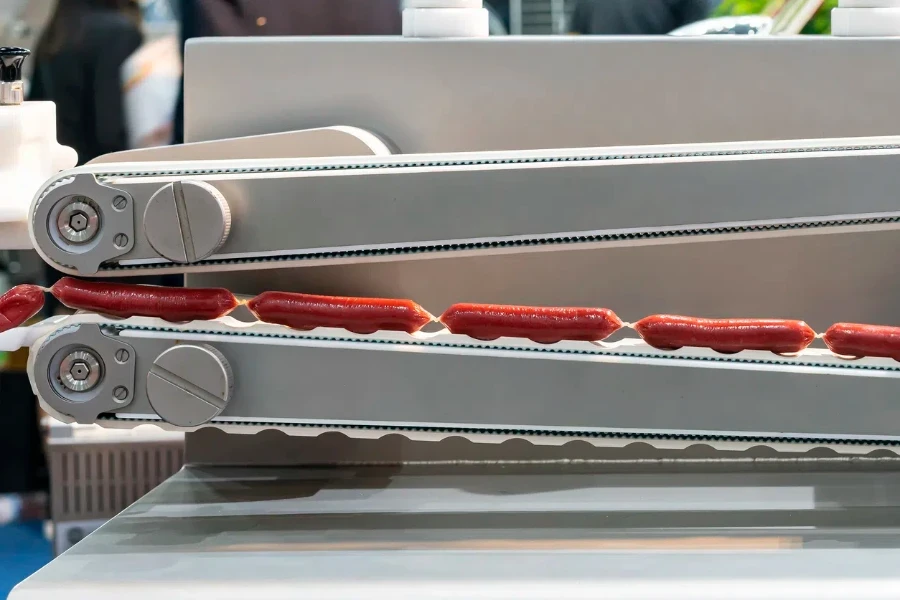
Speed and Output Rate
The speed and output rate of sausage stuffers are critical metrics for evaluating their performance. High-speed models can process up to 1,200 pounds of sausage per hour, significantly enhancing productivity. For instance, the FPEC SS-2000 model boasts an output rate of 1,500 pounds per hour, making it ideal for large-scale operations.
Output rate is influenced by the machine’s motor power and design. Machines with a 3 HP motor, like the Talsa H26P, offer robust performance, ensuring consistent output. Additionally, the design of the stuffing tube and hopper size can impact the speed, with larger hoppers reducing the need for frequent refills.
Efficiency is also determined by the machine’s ability to maintain speed under load. Advanced models feature variable speed controls, allowing operators to adjust the rate based on the type of sausage being produced. This flexibility ensures optimal performance across different sausage varieties.
Consistency and Precision
Consistency and precision are paramount in sausage production, affecting both product quality and customer satisfaction. High-precision sausage stuffers utilize advanced piston designs to ensure uniform filling. For example, the Vemag HP10E features a double screw pump system that guarantees consistent portioning.
Precision is also enhanced by digital control systems. Machines equipped with programmable logic controllers (PLCs) can maintain exact filling pressures and speeds. This technology minimizes human error and ensures each sausage is filled to the exact specifications, crucial for meeting industry standards.
Consistency is further supported by the use of high-quality materials and construction. Stainless steel components, such as those found in the Risco RS 505, provide durability and hygiene, essential for maintaining consistent performance over time. Regular maintenance and calibration are also vital to sustaining precision and consistency.
Cost Considerations and Budgeting
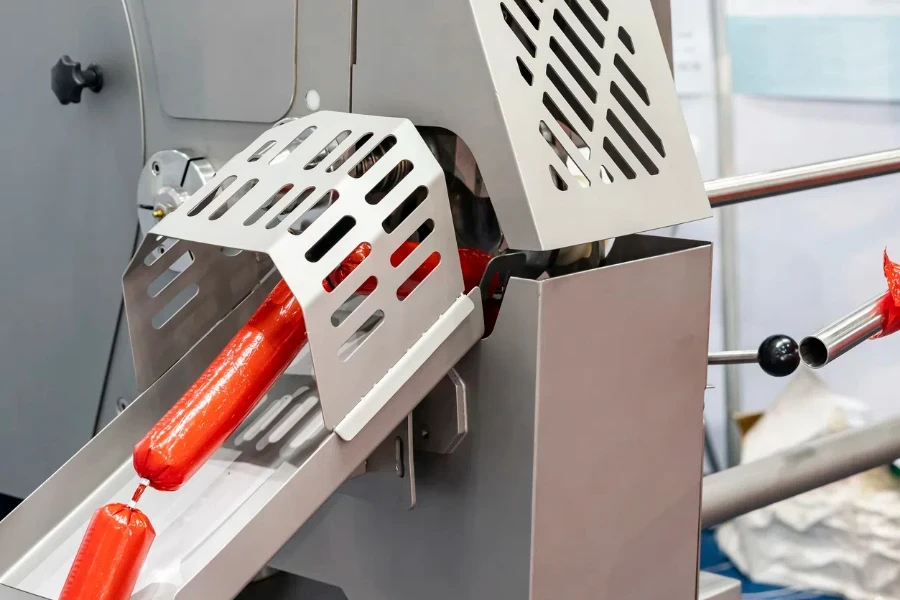
Price Range Overview
The price range for sausage stuffers varies widely based on features and capacity. Entry-level models suitable for small businesses can start at around $1,000. These machines typically offer basic functionality and lower output rates, making them ideal for artisanal producers.
Mid-range sausage stuffers, priced between $5,000 and $10,000, offer enhanced features such as variable speed controls and larger hoppers. For example, the Talsa H26P, priced at approximately $7,500, provides a good balance of performance and cost, suitable for medium-sized operations.
High-end models, which can exceed $20,000, are designed for industrial-scale production. These machines, like the FPEC SS-2000, offer advanced features such as automated controls and high output rates. Investing in these models can significantly boost productivity and efficiency, justifying the higher initial cost.
Long-Term Cost Efficiency
Long-term cost efficiency is a crucial factor when investing in sausage stuffers. Machines with energy-efficient motors can reduce operational costs over time. For instance, models with variable frequency drives (VFDs) can adjust motor speed to match the workload, saving energy and reducing wear.
Maintenance costs also impact long-term efficiency. Machines with easily accessible components and modular designs, like the Risco RS 505, simplify maintenance and reduce downtime. Regular servicing and the use of high-quality lubricants can extend the lifespan of the equipment, further enhancing cost efficiency.
Additionally, the durability of materials used in construction affects long-term costs. Stainless steel components resist corrosion and wear, reducing the need for frequent replacements. Investing in a high-quality machine may have a higher upfront cost but can lead to significant savings in maintenance and operational expenses over its lifetime.
Trends in Sausage Stuffer Technology
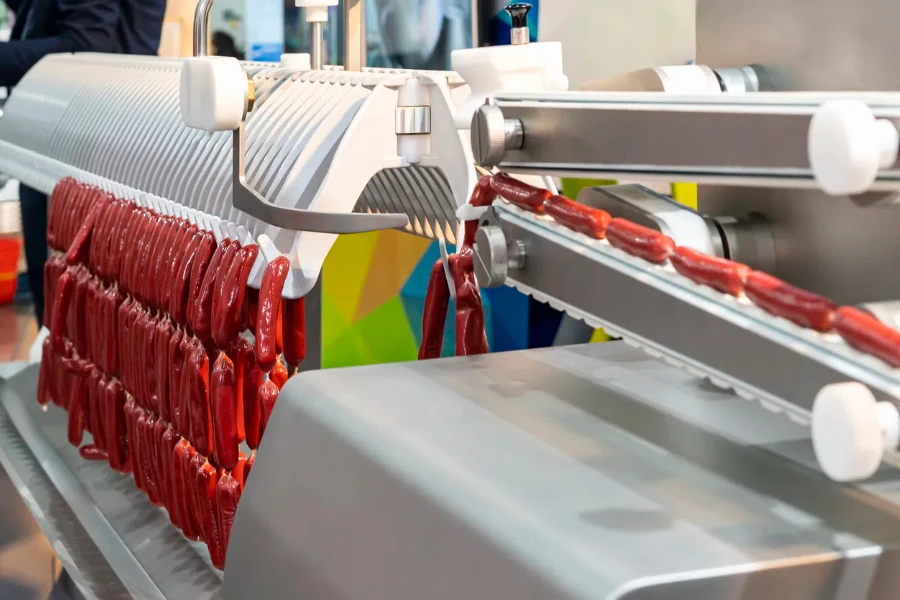
Innovations in Design
Recent innovations in sausage stuffer design focus on improving efficiency and ease of use. Ergonomic designs, such as those seen in the Talsa H26P, reduce operator fatigue and increase productivity. Features like adjustable height and angled hoppers make the stuffing process more comfortable and efficient.
Another significant design innovation is the use of quick-change stuffing tubes. These allow for rapid switching between different sausage sizes, minimizing downtime. For example, the Vemag HP10E offers a quick-change system that can reduce changeover time by up to 50%, enhancing overall productivity.
Hygiene and sanitation are also driving design innovations. Machines with seamless welding and rounded edges, like the Risco RS 505, are easier to clean and maintain. This design reduces the risk of contamination and ensures compliance with stringent food safety standards.
Integration with Smart Technology
The integration of smart technology is revolutionizing the sausage stuffer industry. IoT-enabled machines can provide real-time data on performance metrics, such as output rate and motor efficiency. This data can be used to optimize production processes and reduce downtime.
Smart technology also enables predictive maintenance. Sensors can monitor the condition of critical components and alert operators to potential issues before they cause a breakdown. For instance, the FPEC SS-2000 features an advanced monitoring system that can predict maintenance needs, reducing unexpected downtime.
Automation is another key trend, with many modern sausage stuffers incorporating PLCs and touch-screen interfaces. These systems allow for precise control over the stuffing process and can store multiple recipes for quick recall. Automation not only improves consistency but also reduces the need for skilled labor, lowering operational costs.
Making an Informed Decision
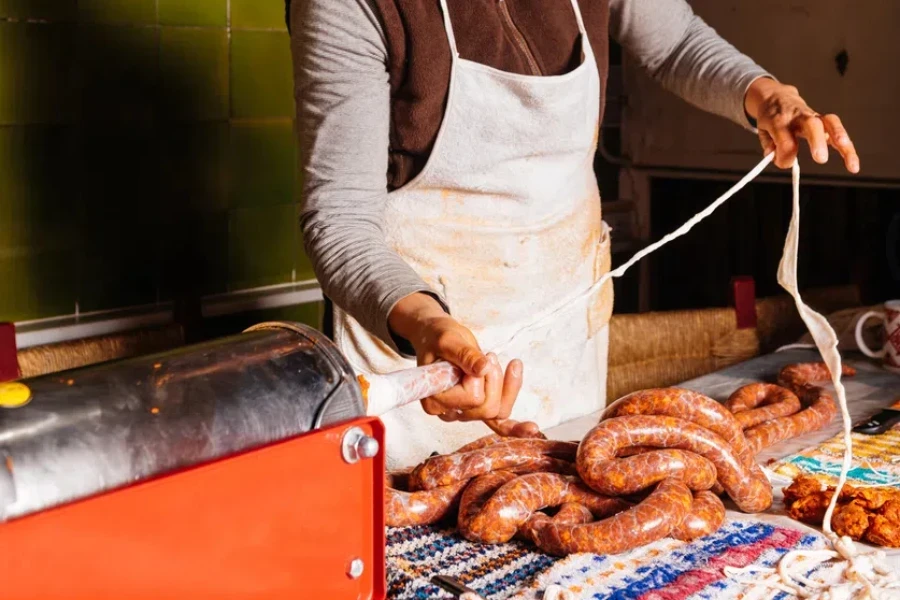
When selecting a sausage stuffer, it is essential to consider both performance and cost efficiency. Evaluating the speed, output rate, and precision of the machine can help determine its suitability for your production needs. Additionally, considering long-term costs and the latest technological trends can ensure a wise investment.
